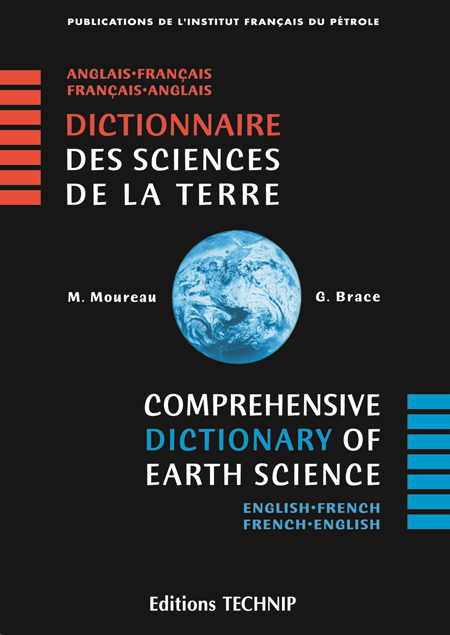Comprehensive Dictionary of Earth Science. English-French, French-English
Dictionnaire des sciences de la Terre. Anglais-Français, Français-Anglais
Authors : BRACE Gerald , MOUREAU Magdeleine
ISBN : 9782710807490
hardcover 170 x 240 mm
Publication date : February 2000
American buyers

 Add to cart 199 $ (163 €)
Add to cart 199 $ (163 €)
The more than 37 000 entries in this dictionary cover all fields of earth science, ranging from archaeology to volcanology, including: astronomy, biochemistry, biology, cartography, climatology, crystallography, ecology, environment, geochemistry, geochronology, geodesy, geology, geomorphology, geophysics, gitology, hydrogeology, hydrology, meteorology, mineralogy, oceanography, paleontology, palynology, pedology, petrography, photogeology, remote sensing, sedimentology, stratigraphy, taxonomy, tectonics, topography. The terms, with explanations in both languages, are defined or explained and/or illustrated by examples of use. Abbreviations are explained and given their equivalence in the other language (when one exists). Greek and Latin roots are given, along with place names and persons. Appendixes also give additional tables and figures. This dictionary will enable the user to access all the available information required to understand a term or expression, without having to consult other sources.
Avec plus de 37 000 entrées, ce dictionnaire couvre l’ensemble des domaines des sciences de la Terre, de l’archéologie à la volcanologie, en passant par l’astronomie, la biochimie, la biologie, la cartographie, la climatologie, la cristallographie, l’écologie, l’environnement, la géochimie, la géochronologie, la géodésie, la géologie, la géomorphologie, la géophysique, la gîtologie, l’hydrogéologie, l’hydrologie, la météorologie, la minéralogie, l’océanographie, la paléontologie, la palynologie, la pédologie, la pétrographie, la photogéologie, la sédimentologie, la stratigraphie, la taxinomie, la tectonique, la télédétection et la topographie. Dans chacune des deux langues, les termes sont accompagnés de leur(s) traduction(s), de définitions, de commentaires, d’explications et/ou d’exemples d’utilisation. Les abréviations sont associées à leur forme développée, ainsi qu’à leur équivalence dans l’autre langue, lorsqu’elle existe. Sont également pris en compte les racines grecques et latines servant à comprendre l’étymologie des termes, ainsi que les noms de lieux et de personnes

 Partager
Partager
 Tweeter
Tweeter

 Browse the book
Browse the book